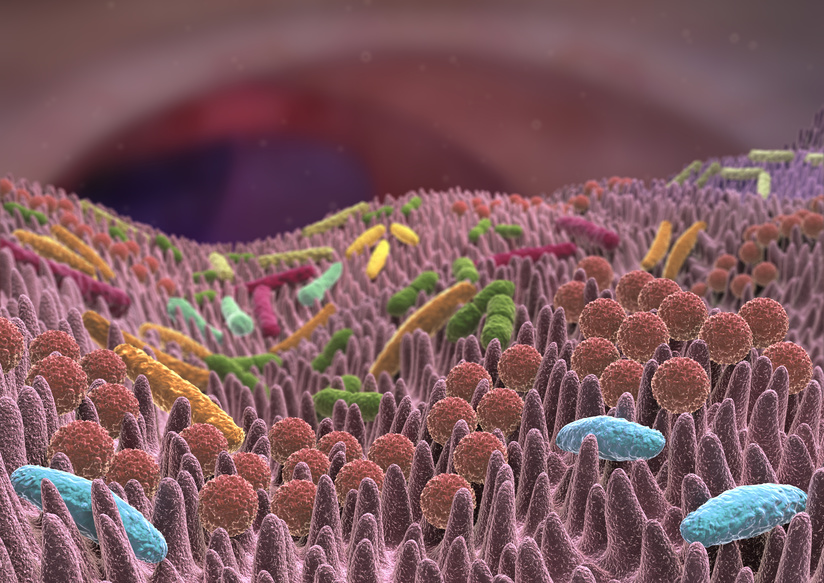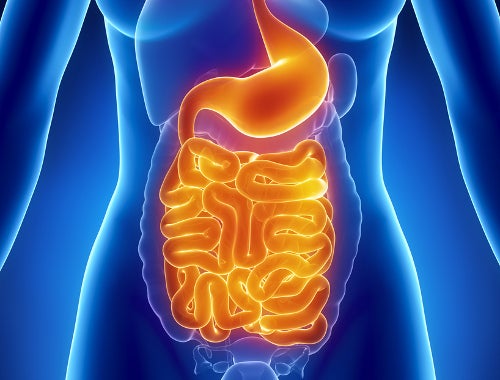Flora digestive information
Home » » Flora digestive informationYour Flora digestive images are ready in this website. Flora digestive are a topic that is being searched for and liked by netizens today. You can Download the Flora digestive files here. Find and Download all free vectors.
If you’re searching for flora digestive pictures information linked to the flora digestive topic, you have visit the right site. Our website frequently gives you suggestions for viewing the maximum quality video and picture content, please kindly surf and locate more enlightening video content and graphics that fit your interests.
Flora Digestive. Gut flora is a complex ecological system formed by indigenous prokaryotic and eukaryotic microbial cells in the digestive tracts. See, the gastrointestinal (gi) tract, which starts in the mouth and ends at, let’s just call it “the other end,” is home to over 100 trillion bacteria, which is collectively known as the gut flora or gut microbiota. Alternative terms include gut flora (an outdated term that technically refers to plants) and gut microbiome.the gastrointestinal metagenome (sometimes defined as the microbiome) is the aggregate of all the genomes of. Autochthonous microorganisms colonize particular habitats, i.e., physical spaces in the gi tract, whereas allochthonous microorganisms cannot colonize particular habitats except under abnormal.
 What Is Matula Tea and How to Use It Hollywood Homestead From hollywoodhomestead.com
What Is Matula Tea and How to Use It Hollywood Homestead From hollywoodhomestead.com
Normal flora of gastrointestinal tract gi tracts consists of stomach, small intestine and large intestine. There are three classifications of intestinal flora: Gut flora refers to the microorganisms residing in the digestive tract. Gastric and intestinal mucus is formed by combining mucin and water. The term “intestinal flora” refers to all bacteria in the gut. The gastrointestinal tract can be divided into various distinct anatomical areas.
To transport vitamins, minerals and other nutrients through the gut wall.
Mucin is a glycoprotein—a molecule that bonds glucose with amino acids. Normal flora of gastrointestinal tract gi tracts consists of stomach, small intestine and large intestine. These microorganisms are generally harmless. Yogurt is capable of “regenerating the intestinal flora” «the microorganisms found in yogurt are capable of regenerating the intestinal flora. What are the normal flora of the gastrointestinal tract? Actively synthesize nutrients such as k2, many of the b vitamins and some amino acids.
 Source: hollywoodhomestead.com
Source: hollywoodhomestead.com
In addition, the bifidusbacteria present in yogurt also stimulate the immune system, “said. Acidity lowers the bacterial count, which is highest (approximately 10 3 to 10 6 organisms/g of contents) after meals and lowest (frequently undetectable) after digestion. Most bacteria belong to the genera bacteroides, clostridium, faecalibacterium, eubacterium, ruminococcus, peptococcus, peptostreptococcus, and bifidobacterium. Gut flora refers to the microorganisms residing in the digestive tract. Coli produces vitamin b12 and vitamin k.
 Source: janeshealthykitchen.com
Source: janeshealthykitchen.com
They control all other bacteria in the digestive system. Normal flora of gastrointestinal tract gi tracts consists of stomach, small intestine and large intestine. These microorganisms are generally harmless. The microbial flora present on the mucosa, within crypts, and in the lumen is. The human digestive tract begins in the mouth and extends to the anus.
 Source: presse.inserm.fr
Source: presse.inserm.fr
Normal flora of gastrointestinal tract gi tracts consists of stomach, small intestine and large intestine. Most bacteria belong to the genera bacteroides, clostridium, faecalibacterium, eubacterium, ruminococcus, peptococcus, peptostreptococcus, and bifidobacterium. The consumption of foods with probiotics, such as yogurt, helps maintain the balance of the digestive system and intestinal flora. Their distribution varies along the location of the gut and among individuals. The normal flora in your gastrointestinal tract ferment indigestible fiber in your food, breaking it down into smaller molecules that are eliminated.
 Source: kenhub.com
Source: kenhub.com
Normal flora of gastrointestinal tract gi tracts consists of stomach, small intestine and large intestine. Savage has defined and categorized the gastrointestinal microflora into two types, autochthonous flora (indigenous flora) and allochthonous flora (transient flora). They control all other bacteria in the digestive system. The entire surface of the digestive system is covered and dominated by these beneficial bacteria. Actively synthesize nutrients such as k2, many of the b vitamins and some amino acids.
 Source: sbs.com.au
Source: sbs.com.au
Some species of microbes are beneficial to. Also called friendly or probiotic bacteria. Gastric and intestinal mucus is formed by combining mucin and water. The gastrointestinal tract can be divided into various distinct anatomical areas. They contribute significantly to healthy digestion and protection against foreign and harmful bacteria.
 Source: eatingworks.com
Source: eatingworks.com
Intestinal normal flora produces enzymes such as cellulose, galactosidase, glucosidase etc and helps in digestion of food. Major role of beneficial flora digestion and absorption of food. Nordic flora™ digestive enzymes delivers a wide spectrum of vegetarian enzymes that naturally helps the body break down carbohydrates, proteins, and fats—optimizing nutrient availability.*. The stomach is a relatively hostile environment for bacteria. The consumption of foods with probiotics, such as yogurt, helps maintain the balance of the digestive system and intestinal flora.
 Source: mejorconsalud.com
Source: mejorconsalud.com
The microbial flora present on the mucosa, within crypts, and in the lumen is. Some species of microbes are beneficial to. Coli produces vitamin b12 and vitamin k. Savage has defined and categorized the gastrointestinal microflora into two types, autochthonous flora (indigenous flora) and allochthonous flora (transient flora). Acidity lowers the bacterial count, which is highest (approximately 10 3 to 10 6 organisms/g of contents) after meals and lowest (frequently undetectable) after digestion.
 Source: microbesworld.com
Source: microbesworld.com
It contains bacteria swallowed with the food and those dislodged from the mouth. Gut flora is a complex ecological system formed by indigenous prokaryotic and eukaryotic microbial cells in the digestive tracts. The human gastrointestinal (gi) tract harbours a complex and dynamic population of microorganisms, the gut microbiota, which exert a marked influence on the host during homeostasis and disease. To transport vitamins, minerals and other nutrients through the gut wall. Their distribution varies along the location of the gut and among individuals.
 Source: dietandi.com
Source: dietandi.com
Nordic flora™ digestive enzymes delivers a wide spectrum of vegetarian enzymes that naturally helps the body break down carbohydrates, proteins, and fats—optimizing nutrient availability.*. Also called friendly or probiotic bacteria. They control all other bacteria in the digestive system. What are the normal flora of the gastrointestinal tract? To break down proteins, carbohydrates, fibre and fats.
This site is an open community for users to do submittion their favorite wallpapers on the internet, all images or pictures in this website are for personal wallpaper use only, it is stricly prohibited to use this wallpaper for commercial purposes, if you are the author and find this image is shared without your permission, please kindly raise a DMCA report to Us.
If you find this site helpful, please support us by sharing this posts to your favorite social media accounts like Facebook, Instagram and so on or you can also save this blog page with the title flora digestive by using Ctrl + D for devices a laptop with a Windows operating system or Command + D for laptops with an Apple operating system. If you use a smartphone, you can also use the drawer menu of the browser you are using. Whether it’s a Windows, Mac, iOS or Android operating system, you will still be able to bookmark this website.
Category
Related By Category
- Cheap dog grooming information
- Best car restoration information
- All car restorations information
- Buy dog clothes online information
- Causes for childhood obesity information
- First aid courses london information
- Dream interpretation worms information
- First aid course toronto information
- Dash diet summary information
- Flatulence foods information